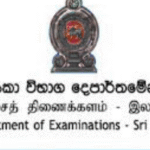Nestled in the serene Aglar Valley of Uttarakhand’s Tehri Garhwal district, Devalsari Temple is a peaceful retreat that blends spirituality with nature’s beauty. Dedicated to Lord Shiva, this ancient temple, built in the 1600s, draws devotees, trekkers, and nature lovers alike. Surrounded by deodar forests and Himalayan peaks, it offers a quiet escape from city life. Whether you’re seeking divine blessings or a chance to soak in Uttarakhand’s untouched landscapes, Devalsari is a must-visit. This article explores the temple’s history, spiritual significance, travel details, and nearby attractions, all in a simple, human tone to help you plan your trip.
With its rich folklore, trekking trails, and vibrant biodiversity, Devalsari Temple is more than a religious site—it’s a journey into the heart of the Garhwal Himalayas. Let’s dive into what makes this place so special.
History of Devalsari Temple
Devalsari Temple’s story is steeped in legend and faith. Local tales say it began with a sadhu who arrived in the 1600s, seeking to build a hut in the Aglar Valley. A villager’s dream revealed the sadhu as Lord Shiva, declaring the area Devalsari, with its deodar trees forever protected. Later, a cow from Kinsu village mysteriously poured milk over a hidden shivling daily. When the owner tried to destroy it, a tragic miracle led to the temple’s construction, using wood from a miraculously grown Baikal bush and deodar trees. Refurbished in 2014, the temple’s Garhwali-style woodwork reflects Uttarakhand’s heritage. The Kaalratri Festival in September draws thousands, celebrating Shiva’s presence with devotion and community spirit.
Spiritual Significance of Devalsari
The temple is a sacred space for Shiva devotees, offering a calm setting for prayer and meditation. Its remote location enhances its spiritual vibe, making it ideal for reflection. The shivling, tied to miraculous stories, is believed to protect the region from calamities. The annual Kaalratri Festival, hosted alternately with Bangseel village, sees 12,000–15,000 visitors, with locals preparing food and rituals. The temple’s use of deodar flower tilak symbolizes its bond with nature, deepening its spiritual charm.
Connection to Lord Shiva
Devalsari’s shivling is central to its spiritual allure, with legends of divine intervention strengthening devotees’ faith. Believed to grant blessings for prosperity and protection, it draws pilgrims, especially during Shivratri. The serene forest setting amplifies the sense of connection to Shiva, known as the destroyer and protector in Hinduism. Visitors often feel a deep peace, making it a haven for spiritual seekers.
Local Beliefs and Miracles
Local folklore fuels Devalsari’s mystique. The cow-milk miracle and the Baikal bush’s growth are seen as signs of Shiva’s presence. Villagers believe the temple safeguards them from natural disasters. These stories, passed down generations, make Devalsari a place where faith and history intertwine, attracting those curious about its divine legacy.
How to Reach Devalsari Temple
Getting to Devalsari is an adventure through Uttarakhand’s scenic routes. Located 55 km from Mussoorie and 85 km from Dehradun, it’s accessible by air, train, or road. The final 8 km from Thatyur requires a trek, adding to the journey’s charm. Here’s how to plan your trip.
By Air and Train
The nearest airport, Jolly Grant in Dehradun (80–90 km away), connects to major Indian cities. From there, hire a taxi to Thatyur, then trek 8 km to the temple. Dehradun Railway Station, 55 km away, is the closest rail hub. Take a taxi or bus to Thatyur, followed by the trek. Both options offer stunning Himalayan views, making the journey memorable.
By Road and Trekking Routes
From Dehradun, drive via Mussoorie and Dhanaulti to Thatyur (55 km), then trek 8 km through oak and rhododendron forests. Alternatively, from Mussoorie (43.9 km), take the Suakholi-Thatyur route. Two trekking options include: Route 1 (Thatyur to Lumsu Ridge, 67 km, 3,500 m altitude) or Route 2 (Devalsari Forest Guest House to Nag Tibba, 33.5 km, 2,332 m). Both are easy-graded treks, perfect for beginners.
Best Time to Visit
Timing your visit to Devalsari enhances the experience. The temple is open from dawn to sunset, but weather and festivals play a role in planning.
Spring and Summer (March–June)
Spring and summer offer pleasant weather (15–25°C), ideal for trekking and sightseeing. Clear skies reveal Himalayan peaks, and blooming forests add charm. These months are perfect for combining temple visits with outdoor activities like birdwatching or exploring nearby meadows.
Autumn (September–November)
Autumn brings crisp air and vibrant landscapes, with temperatures similar to spring. The Kaalratri Festival in September draws crowds for its spiritual energy. Trails are less muddy than in monsoon, making trekking enjoyable. This season balances nature and cultural experiences.
Nearby Attractions and Activities
Devalsari’s surroundings offer plenty to explore, from treks to cultural immersion. Here are some highlights.
Trekking and Nature Walks
The 8 km trek from Thatyur to Devalsari winds through lush forests, offering views of flora and fauna. Nearby, Devalsari Bugyal, a scenic meadow, is perfect for trekkers. The Nag Tibba trek (2,332 m) is another favorite, blending adventure with Himalayan vistas. Local guides from agencies like Back To Trek (+91 9368616661) can enhance the experience.
Birdwatching and Butterfly Festivals
Devalsari is a paradise for birdwatchers, with over 200 species like Himalayan Griffons and Koklass Pheasants. More than 70 butterfly species attract tourists, with local conservation groups hosting butterfly festivals. These events include guided walks, showcasing the area’s biodiversity and preservation efforts, perfect for nature enthusiasts.
Cultural Experiences
Immerse yourself in Jaunpuri culture by visiting nearby villages like Bangsil or Kinsu. Interact with locals, taste Garhwali cuisine, and learn about traditions tied to the temple. The Kaalratri Festival offers a deep dive into community rituals, with food and music reflecting Uttarakhand’s heritage.
Accommodation and Travel Tips
Devalsari offers basic but cozy stays, ensuring a comfortable visit. Here’s how to prepare.
Homestays and Guesthouses
Basic homestays and guesthouses in Devalsari or Thatyur provide authentic mountain living. For more options, stay in Mussoorie or Dhanaulti, 43.9–55 km away. Book in advance during festival season. Homestays offer local food, adding to the cultural experience.
Packing and Preparation
Pack light but include warm clothes, trekking shoes, and a first-aid kit. Stay hydrated to avoid altitude sickness. Hire a local guide for treks and temple history insights. Respect the environment by avoiding littering, preserving Devalsari’s natural beauty for future visitors.
Why Visit Devalsari Temple?
Devalsari Temple is a unique blend of spirituality, history, and nature. Its ancient shivling, tied to miraculous tales, offers a sacred space for reflection. The surrounding forests and Himalayan views make it a trekker’s delight, while birdwatching and cultural festivals add depth. Whether you’re a devotee, adventurer, or nature lover, Devalsari promises a refreshing escape. Plan your visit to experience Uttarakhand’s hidden charm.
Disclaimer: Always check with local authorities for updated temple timings and travel conditions. Respect local customs and the environment during your visit.



